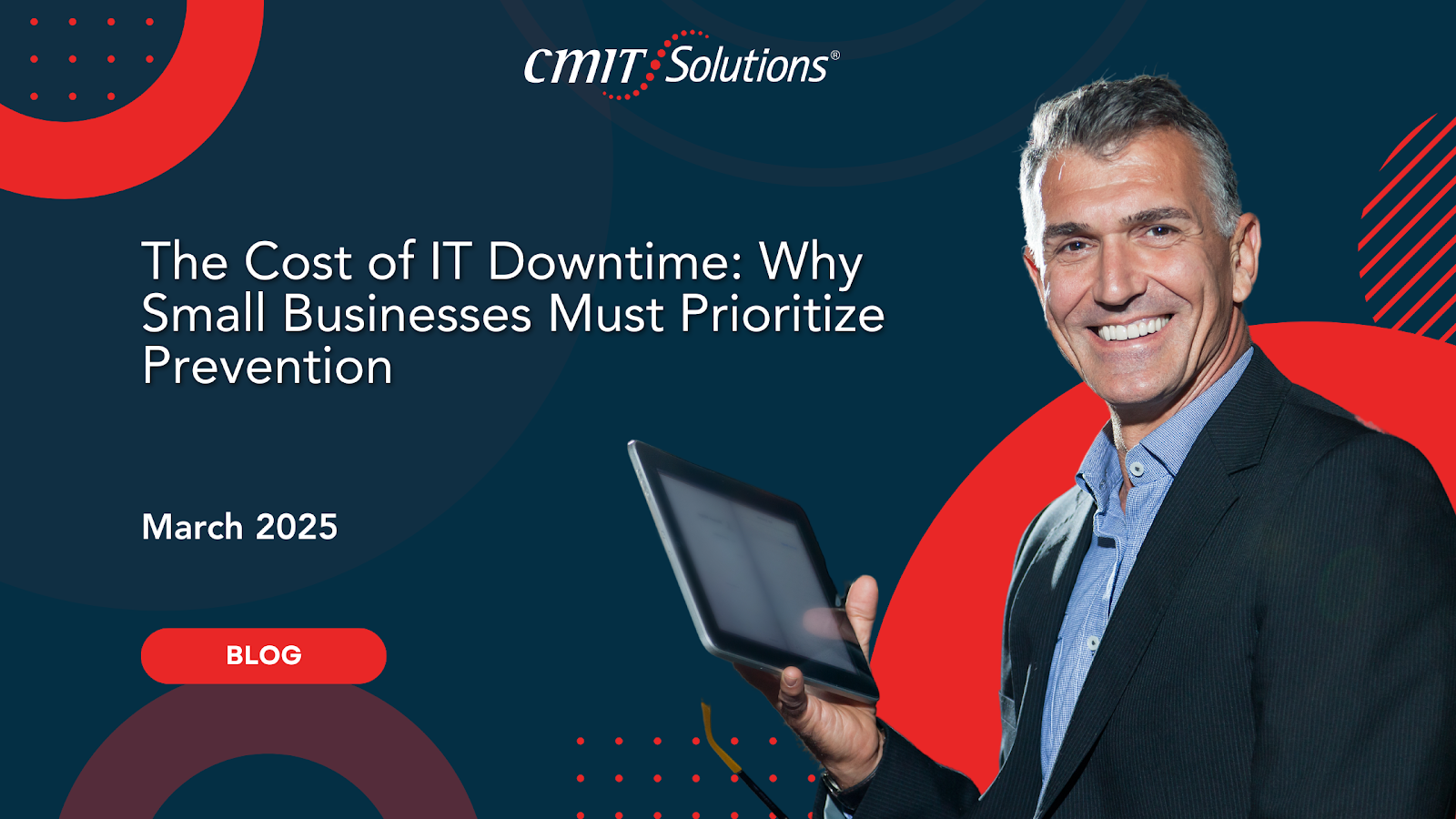Why Downtime is a Silent Threat to Small Businesses
For small businesses, every minute of operation counts. Whether handling customer inquiries, processing transactions, or managing internal workflows, technology plays a critical role in daily productivity. However, when IT systems fail—due to hardware malfunctions, cyberattacks, software issues, or human error—businesses face unexpected downtime that can be costly and damaging.
Unlike large enterprises with dedicated IT departments and contingency plans, small businesses often lack the resources to respond quickly, making downtime even more disruptive. Studies show that IT downtime costs businesses thousands of dollars per hour, yet many small businesses fail to implement preventive strategies that could minimize risk.
In this article, we will explore:
- The hidden costs of IT downtime that many small business owners overlook.
- The most common causes of downtime and how to prevent them.
- How Managed IT Services help businesses avoid costly interruptions and maintain operational stability.
The True Cost of IT Downtime for Small Businesses
Many business owners underestimate the financial and operational impact of downtime. While an occasional system reboot or minor technical issue may seem trivial, unplanned downtime can lead to significant revenue loss, reduced customer trust, and long-term business damage.
1. Loss of Revenue and Productivity
When IT systems are down, employees cannot perform their duties efficiently, leading to delays in processing orders, serving customers, and completing daily operations. If a business relies on digital transactions, cloud-based tools, or online customer engagement, even a short period of downtime can result in lost sales opportunities.
🔹 Example: A small e-commerce store experiencing a website outage during peak business hours could lose thousands of dollars in missed sales.
Prevention Strategy:
✔ Implement real-time IT monitoring to detect potential failures before they disrupt operations.
✔ Use redundant systems and cloud-based backups to keep operations running smoothly.
2. Damaged Customer Trust and Reputation
In today’s digital age, customers expect reliable and uninterrupted service. If a business frequently experiences downtime, slow service, or unresponsive platforms, customers may lose confidence and take their business elsewhere.
🔹 Example: A small accounting firm experiencing email server downtime during tax season may lose important client communications, leading to frustration and potential customer churn.
Prevention Strategy:
✔ Use cloud-based email solutions with uptime guarantees.
✔ Implement disaster recovery plans to ensure critical systems can be restored quickly.
3. Compliance Risks and Legal Consequences
For businesses in regulated industries such as healthcare, finance, and legal services, IT failures can lead to compliance violations. Many regulations, including HIPAA, PCI-DSS, and GDPR, require businesses to ensure data availability, security, and confidentiality.
🔹 Example: A small medical practice that loses access to electronic health records (EHRs) due to a server crash may face compliance violations and potential legal action.
Prevention Strategy:
✔ Regularly back up data and store copies in secure, compliant cloud environments.
✔ Work with an IT provider specializing in compliance and risk management.
4. Increased IT Recovery Costs
When an IT failure occurs, many businesses scramble to find quick fixes, often resorting to expensive emergency repairs. Without a structured IT maintenance plan, small businesses end up spending far more on reactive fixes than they would on preventive IT management.
🔹 Example: A small business that ignores server maintenance might experience a critical failure requiring costly emergency repairs, exceeding the cost of regular IT upkeep.
Prevention Strategy:
✔ Invest in Managed IT Services that provide ongoing maintenance at a predictable cost.
✔ Schedule routine hardware and software assessments to identify potential failure points.
What Causes IT Downtime? Key Risk Factors for Small Businesses
While IT downtime can stem from various factors, some of the most common causes include:
1. Hardware Failures
Aging equipment, overheating, and lack of maintenance can cause sudden hardware failures, leading to operational disruptions.
✔ Prevention: Upgrade outdated equipment before it becomes unreliable.
2. Cybersecurity Breaches
Ransomware attacks, phishing scams, and unauthorized access can cripple business operations by locking systems or stealing sensitive data.
✔ Prevention: Implement multi-layered cybersecurity defenses, including endpoint protection and employee security awareness training.
3. Software Glitches and Unpatched Systems
Outdated or incompatible software can lead to crashes, slowdowns, and security vulnerabilities.
✔ Prevention: Automate software updates and regularly audit business applications for security flaws.
4. Human Errors
Accidental deletions, misconfigurations, and improper system usage account for nearly 30% of downtime incidents.
✔ Prevention: Provide ongoing IT training for employees to minimize errors.
How Managed IT Services Minimize Downtime and Keep Businesses Operational
Small businesses can dramatically reduce IT downtime by partnering with a Managed IT Service Provider like CMIT Solutions of Boston, Newton, and Waltham. Our team provides proactive IT management, real-time monitoring, and fast support to ensure businesses remain operational.
Benefits of Managed IT Services:
✔ 24/7 IT Monitoring & Automated Issue Detection – Identifies potential system failures before they cause downtime.
✔ Predictive Maintenance & Software Updates – Keeps hardware and software up to date to prevent crashes.
✔ Business Continuity & Disaster Recovery Solutions – Ensures data availability and rapid recovery in case of failures.
✔ Cybersecurity Protections – Prevents cyberattacks that could lock business systems.
✔ Help Desk & Fast IT Support – Immediate technical assistance to resolve issues quickly.
With a Managed IT partner, small businesses can reduce unexpected downtime, improve security, and operate with confidence.
Get a Free IT Assessment – Identify Your Business’s Downtime Risks
Many small businesses do not realize their IT vulnerabilities until an issue arises. Instead of waiting for a costly disruption, it’s essential to assess and strengthen IT systems before downtime occurs.
CMIT Solutions of Boston, Newton, and Waltham is offering a FREE IT Assessment to help businesses:
✔ Identify weaknesses in IT infrastructure that could lead to downtime.
✔ Evaluate data backup and disaster recovery readiness.
✔ Receive recommendations for improving IT efficiency and security.
📌 Assess your IT risks today: IT Security Assessment Form
📞 Speak with our IT experts: (617) 657-1075
🌐 Learn more about Managed IT Services: CMIT Solutions of Boston, Newton, and Waltham
Downtime is avoidable with the right IT strategies in place. Take action now to protect your business from costly disruptions.






